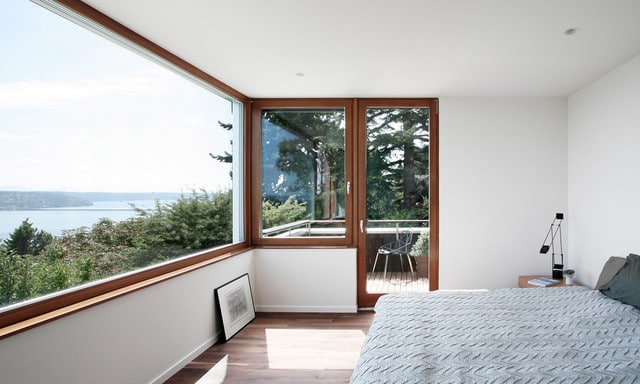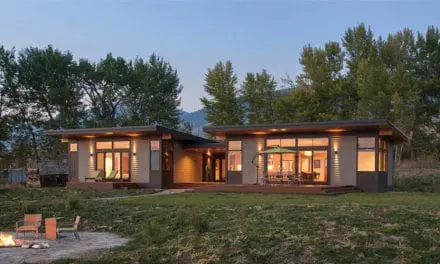
Healthy buildings are infused with fresh air and natural light. It’s a deceptively simple recipe. Healthy buildings are remarkably uncommon in today’s built environment. But that’s beginning to change as high performance building gains ground.
We spend so much of our daily lives inside buildings yet have grown accustomed to stale, hypoxic (low in oxygen, high in carbon dioxide), interior air. This has a direct impact on our daily experience. That drowsy feeling you get a half-hour into a meeting around a packed conference room table may have nothing to do with the dry subject matter. Your body is likely reacting to the oxygen-poor air in that conference room. The same applies to conventional, poorly ventilated workspaces as well as our kids’ classrooms.
Now consider your house. Where does its interior air come from? Likely through air leaks in the wall, maybe from that scary crawlspace, perhaps back-drafted through a sooty chimney. Now consider the impact of off-gassing carpets, combustion by-products from the kitchen stove, and smoke from a fireplace and it’s no wonder that so many children struggle with asthma today.
When compared to the conventional buildings that we’ve grown to accept, healthy buildings are like a breath of fresh air. The airtight construction of a high performance building eliminates the leaks that allow the flow of poor air into the building. Instead, a balanced heat recovery ventilation system (HRV or ERV) delivers a generous, 24/7 supply of filtered fresh air. The HRV or ERV captures the heat energy from the stale air it exhausts from the building and recycles it into the fresh air it brings inside, without the two air streams ever mixing.
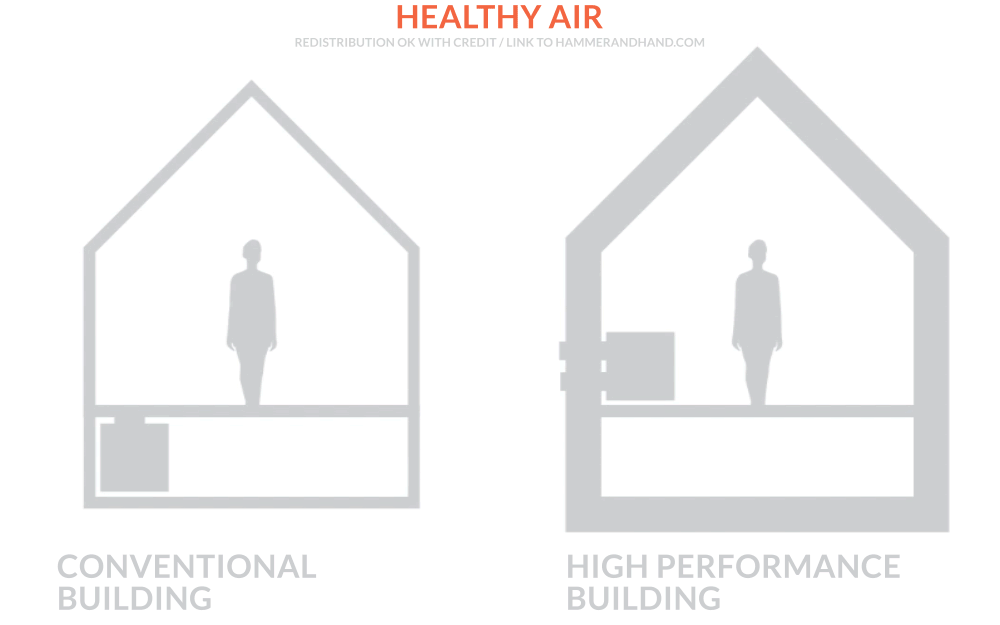
The result? The thermal comfort you expect when inside a building combined with the oxygen-rich air that you normally associate with being outside. Salubrious, yes, but also a great experience of inside/outside connection.
This connection speaks to the psychological benefits of well-designed high performance buildings. The visual connection to the outside that high performance windows can provide in passive buildings makes these spaces gracious to inhabit. We often focus on the energy benefits of passive solar gains and daylighting when we discuss high performance glazing, but their capacity to raise our spirits – especially in the Pacific Northwest, land of seasonal affective disorder – is at least as important.

Finally, by safeguarding the integrity of building assemblies and ensuring that they are free of moisture problems, high performance buildings protect occupants from molds and illnesses they can cause. In conventional buildings, thermal bridges (any building element that cuts across and bypasses a building’s insulation or “thermal envelope”) create cold penetrations through building assemblies, increasing the likelihood of condensation, rot, and mold. Thermal bridge-free construction eliminates these dangerous thermal bridges.
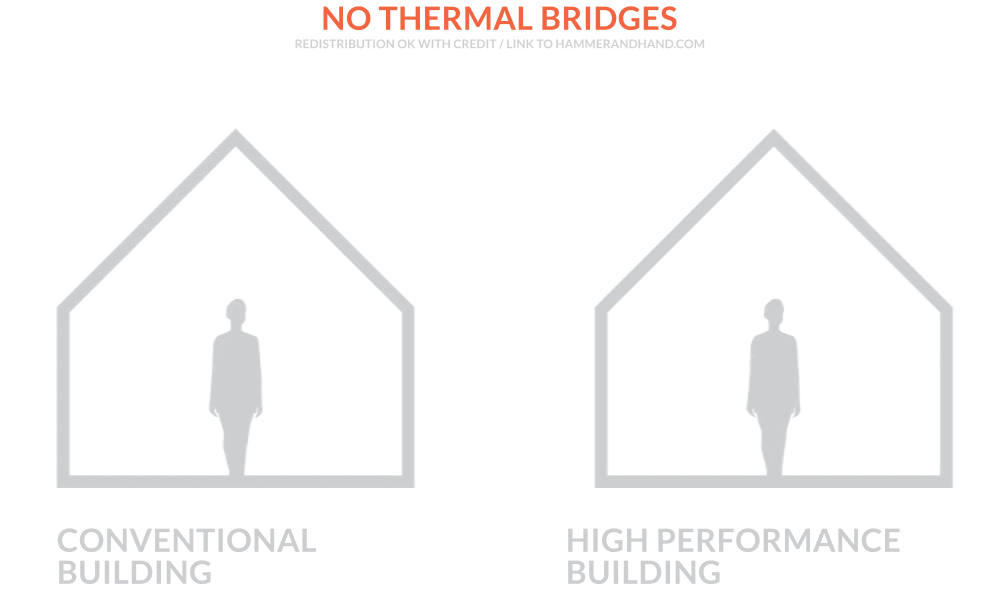
Furthermore, ventilated rain screens dramatically increase the drying potential of exterior walls, so if moisture does make it into these assemblies that moisture can escape before it can create problems, like mold.
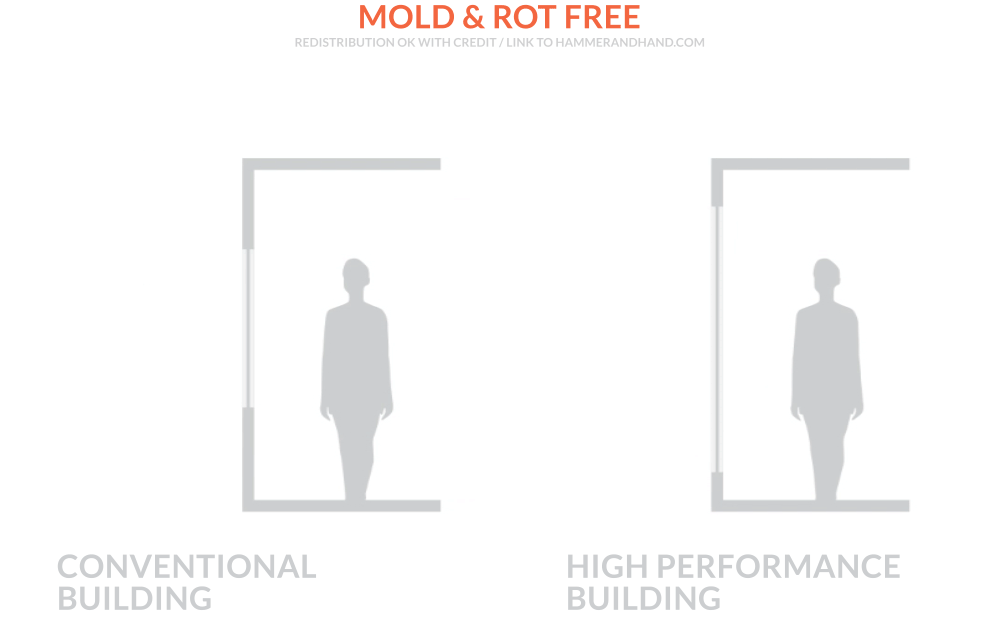
That’s good for the health of the building and for the health of its occupants.
Featured image is of Madrona Passive House, designed by SHED Architecture & Design.
This post was written by Zack Semke and originally appeared on Hammer and Hand.


